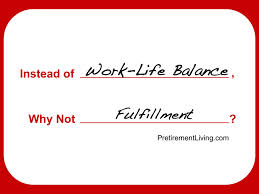 For the third year in a row, DonorDreams is proud to be hosting the Nonprofit Blog Carnival in May. On May 4, 2015, we published a call for submissions from non-profit bloggers across the blogosphere on the topic of “You are the future of philanthropy,” which stems from a 2007 TED Talks video presentation by Katherine Fulton. I asked bloggers to pontificate on any number of topics including the democratization of philanthropy, aggregated giving, social investing, and much more. If you are a blogger looking for more details, click here to read the May 4th call for submissions.
For the third year in a row, DonorDreams is proud to be hosting the Nonprofit Blog Carnival in May. On May 4, 2015, we published a call for submissions from non-profit bloggers across the blogosphere on the topic of “You are the future of philanthropy,” which stems from a 2007 TED Talks video presentation by Katherine Fulton. I asked bloggers to pontificate on any number of topics including the democratization of philanthropy, aggregated giving, social investing, and much more. If you are a blogger looking for more details, click here to read the May 4th call for submissions.
We will publish the May 2015 Nonprofit Blog Carnival on May 28, 2015 right here on the DonorDreams blog platform.
In addition to whipping the blogosphere up into a frenzy, we are dedicating our Tuesday and Thursday DonorDreams posts throughout May to people involved in local philanthropy. We’re videotaping donors, volunteers and non-profit professionals and asking them to answer the following question posed by Katherine Fulton at the end of her TED Talks presentation:
“Imagine 100 years from now and your grandchildren are looking at an old picture of you. What is the story? What impact did you want to have on the community around you? What impact did you make?”
Meet Danielle Ward
Danielle Ward opened her non-profit consulting practice, DMW13 Consulting, in late 2014. Prior to this undertaking she worked or volunteered for the following non-profit organizations or consulting firms:
- Marklund
- Meyer Partners
- Lake Forest Symphony Association
- Association of Lutheran Development Executives
- Toast of the Fox Toastmasters
- The Renewal Center
Danielle is a CFRE who loves philanthropy. She recently joined the Fox West Philanthropy Network’s board of directors. On her LinkedIn page, she announces to the world that she proudly supports the following organizations:
- Development Leadership Consortium
- Illinois Wesleyan University
- Northern Illinois University
- Fine Line Creative Arts Center
- Elgin Knit Works
- Association of Lutheran Development Executives
- National Catholic Development Conference
- Association of Fundraising Professionals (AFP-IHQ)
- Toastmasters International
- RRKIDZ, INC…The Home of Reading Rainbow
For all of these reasons, we thought we’d ask her to take a crack at answering the question that Katherine Fulton posed at the end of her TED Talks presentation.
Danielle’s philanthropy story?
[youtube=http://youtu.be/9QxX9hCZPg4]
(Note: If you receive DonorDreams via email you may need to click here to view today’s video interview.)
Stories from your community?
Katherine Fulton says in her TED Talks presentation:
“We have a problem. Our experience to date both individually and collectively hasn’t prepared us for what we’re going to need to do or who we’re going to need to be. We’re going to need a new generation of citizen leaders willing to commit ourselves to growing and changing and learning as rapidly as possible.”
Have you met someone in your community who you think embodies the future of philanthropy and is a member of a new generation of citizen leaders? If so, please scroll down and use the comment box to tell us about that person.
Here’s to your health!
Erik Anderson
Founder & President, The Healthy Non-Profit LLC
www.thehealthynonprofit.com
erik@thehealthynonprofit.com
http://twitter.com/#!/eanderson847
http://www.facebook.com/eanderson847
http://www.linkedin.com/in/erikanderson847








 Do you know what is rattling around someone’s head during your non-profit board recruitment process? Knowing this could help you design a better process with better tools. This week and part of next week, we are focusing on a recent survey released by our friends at nonprofit
Do you know what is rattling around someone’s head during your non-profit board recruitment process? Knowing this could help you design a better process with better tools. This week and part of next week, we are focusing on a recent survey released by our friends at nonprofit 

 Most non-profit organizations have a very clear understanding of what they need from their board members, but there is a better question that needs to be asked. “Do you know what your board volunteers need from you?” This week and part of next week, we are focusing on board development questions at
Most non-profit organizations have a very clear understanding of what they need from their board members, but there is a better question that needs to be asked. “Do you know what your board volunteers need from you?” This week and part of next week, we are focusing on board development questions at 
 I think Oprah wrapped all of this up best when she said:
I think Oprah wrapped all of this up best when she said: Structure your board development process in a manner that allows the following to occur:
Structure your board development process in a manner that allows the following to occur: I cannot tell you how many boards I’ve worked with on board development and governance projects push back on the idea of year-end board member evaluations.
I cannot tell you how many boards I’ve worked with on board development and governance projects push back on the idea of year-end board member evaluations. Happy Holidays, DonorDreams readers! It is Christmas morning and my inner child woke me early. I’ve been sitting on the couch, enjoying a silent cup of coffee, and waiting for everyone to wake up.
Happy Holidays, DonorDreams readers! It is Christmas morning and my inner child woke me early. I’ve been sitting on the couch, enjoying a silent cup of coffee, and waiting for everyone to wake up. Last night I had the privilege of being invited to a non-profit organization’s year-end holiday party stewardship event. In attendance were board members, capital campaign volunteers, auxiliary members, and various other stakeholders. There was no solicitation presentations, but there were a few powerful testimonials from alumni and lots of gratitude. The energy in the room was palpable, and I was reminded me of the old expression that “hope floats“. It was in this dynamic setting that I had an amazing conversation with someone about the power of leadership.
Last night I had the privilege of being invited to a non-profit organization’s year-end holiday party stewardship event. In attendance were board members, capital campaign volunteers, auxiliary members, and various other stakeholders. There was no solicitation presentations, but there were a few powerful testimonials from alumni and lots of gratitude. The energy in the room was palpable, and I was reminded me of the old expression that “hope floats“. It was in this dynamic setting that I had an amazing conversation with someone about the power of leadership. The following is a list of competencies and skill sets the search committee reviewed during its search criteria conversations:
The following is a list of competencies and skill sets the search committee reviewed during its search criteria conversations: One of the many projects I’m currently working on involves cataloging a resource development toolbox for a client. The things I’m finding in that toolbox are amazing and include: samples,templates, whitepapers, training curricula, calculators, and even an online wizard to help with resource development planning. (Cool stuff!)
One of the many projects I’m currently working on involves cataloging a resource development toolbox for a client. The things I’m finding in that toolbox are amazing and include: samples,templates, whitepapers, training curricula, calculators, and even an online wizard to help with resource development planning. (Cool stuff!) If you Google the definition of “Pandora’s Box,” the all-knowing internet oracle says the term means: “a process that generates many complicated problems as the result of unwise interference in something.” I love this expression, and I used it a few months ago when talking to the board president of a non-profit organization who was describing to me how they were handling a complaint about the agency’s executive director.
If you Google the definition of “Pandora’s Box,” the all-knowing internet oracle says the term means: “a process that generates many complicated problems as the result of unwise interference in something.” I love this expression, and I used it a few months ago when talking to the board president of a non-profit organization who was describing to me how they were handling a complaint about the agency’s executive director.